Walking to St George’s
Walking to St Georges
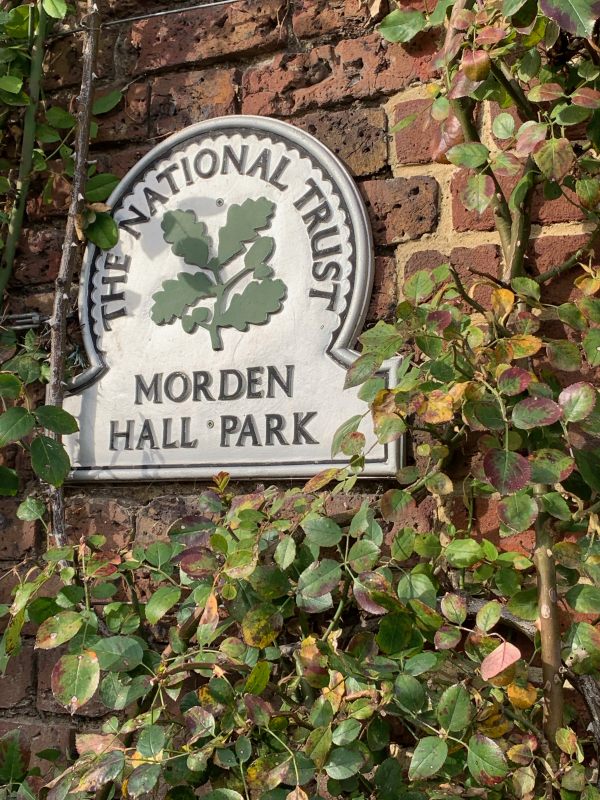
“Everything in Life is an Opportunity” said Bobby.
“Even snuffing it, for an undertaker” he added.
Well, it seems that he now views the ‘very serious event‘ as an opportunity to live life in a more healthy way. It wasn’t unhealthy before, but did include quite a few cakes and fry-ups. So if I tell you he told me that it was one of the best things that’s happened to him, you might think he has lost the plot. I understand. Totally. In the first place, it’s now over four months since that fateful day and he is still here. Battered a bit. Knackered a bit. Philosophical a bit. But still here. Still laughing. Still wanting to write stories. And now he has even more scope.
The last few weeks have seen him travelling twice a week to St George’s Hospital for von Willebrand’s treatment. And then once a week for cardiac rehabilitation exercises at Epsom General. Treadmills, rowing machines and so on.
Part of rehabilitation is the need to consolidate it with lots of aerobic walking. Ten minutes warm up. Ten minutes cool down. In between, however much you can do without discomfort.
But where? And when? No hills allowed at present. But lots of opportunity involving daily activities. The first and brilliant is “A walk to St Georges Hospital” in Tooting. Parking there is an expensive nightmare. Train and bus is fine, but sedentary (or on strike!). Two hours, too. But there is a superb alternative. Full of historical interest. An ancient park. A notorious river in times not so long ago ago. Old industries. Famous Englishmen. A City Farm for children. And a market with spiritual history behind it. A bus garage that once oozed intrigue. Ironically based on the A24 highway from London to Worthing. Passing by our house at South Holmwood.
So welcome to our walk which we hope to encourage you to follow too. The walk starts in the car park of the National Trust property at Morden Hall Park.
This is an amazing property, completely surrounded by drab suburbia. Within sight of the ghastly, for some, Morden Underground Station. Terminus of the Northern Line.
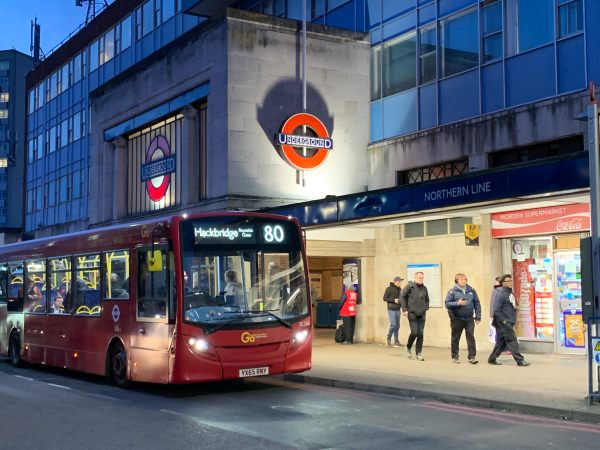
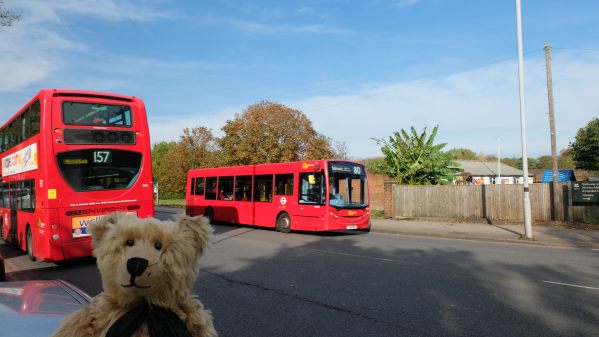
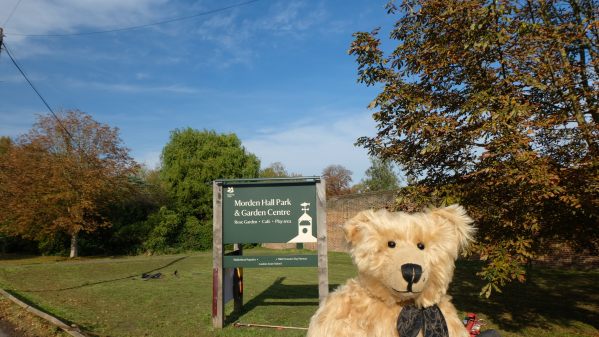
These three pictures are just a five minute walk apart.
The Park’s prosperity came from the snuff mills set up on the River Wandle in the 18th Century. The eventual owner, Gilliat Hatfield, was a very philanthropic man who wanted others to benefit from his beloved estate. Eventually donating it to the NT in 1941. The river meanders through the park and has numerous footbridges crossing it.
The car park is free to NT members. There is a lovely, very popular café there next to the garden centre. Morden Hall Park deserves a blog or two of its own. But this a walk and a fleeting glance of a far different world to that over the garden wall. So leaving the car park crossing the footbridge over the river – be sure to look for fish. There are some very large specimens such as ghost carp and barbel that are captive within the river environment within the park.
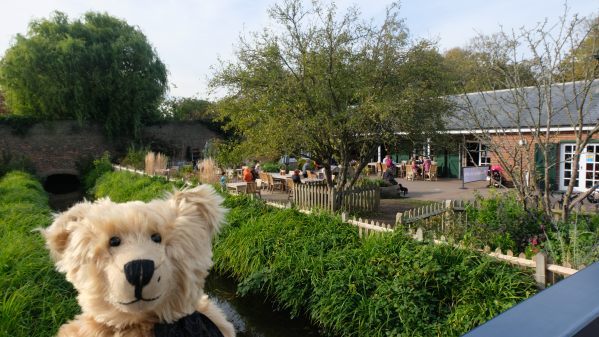
The NT café from the car park from the footbridge over the river.
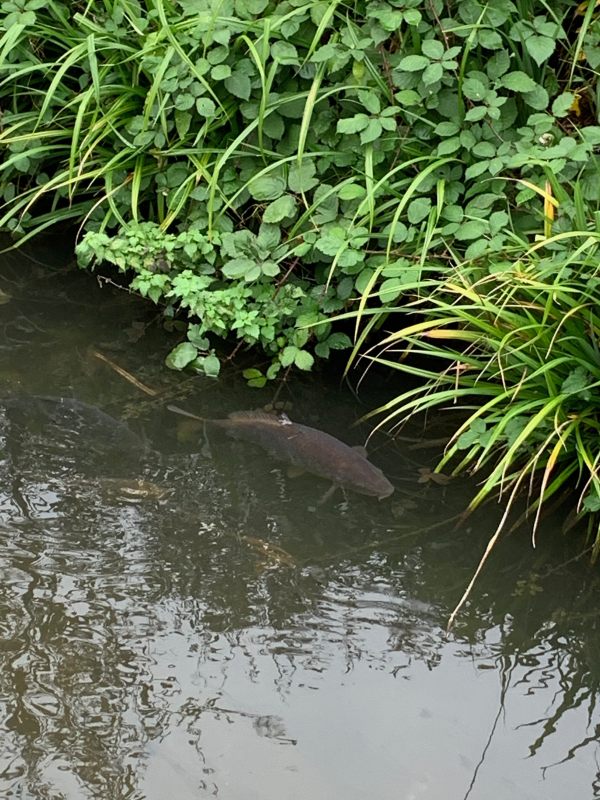
Wow… look at the size of that! Below the bridge.
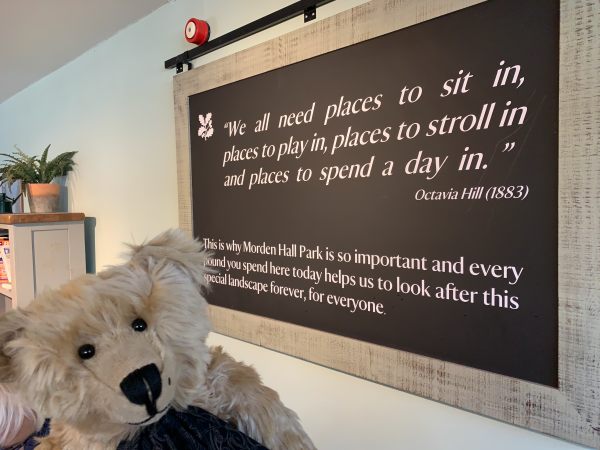
Fine words in the NT Café.
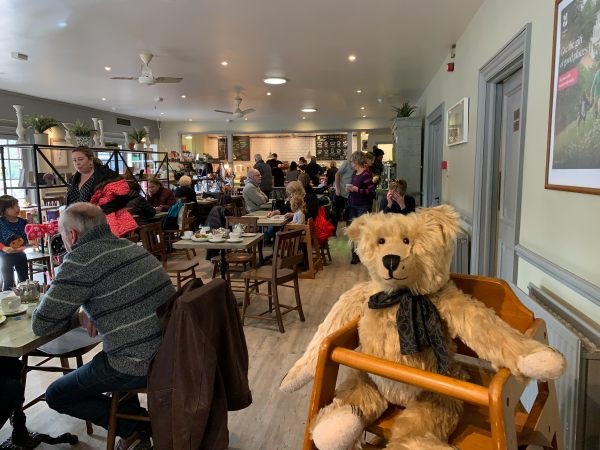
Walking between the café and garden centre, you go through the arch into the park itself. Follow the signs for the Wandle Trail.
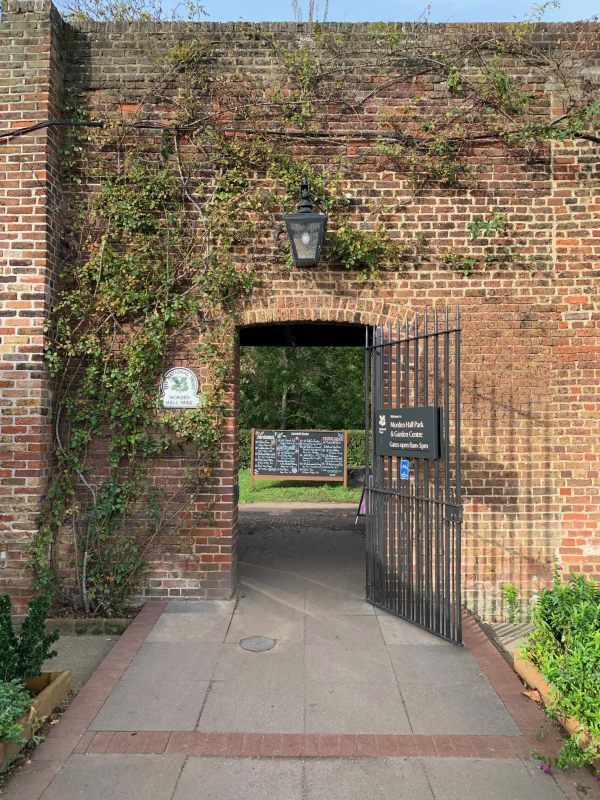
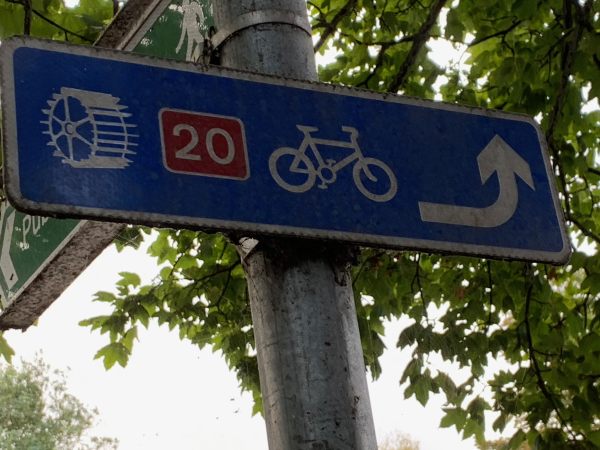
It’s also part of the National Cycle Network and signed appropriately.
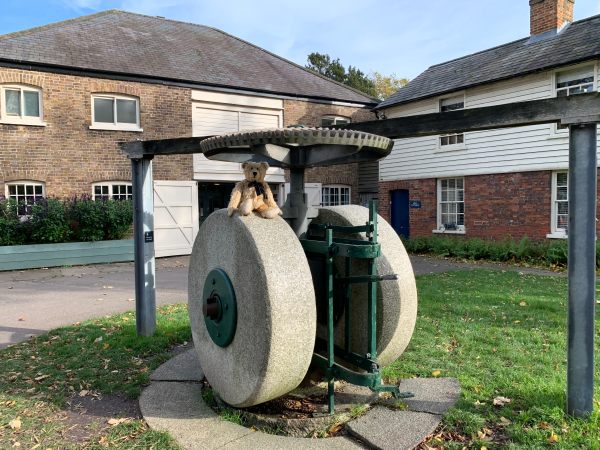
Passing the old mill stones from the snuff days.
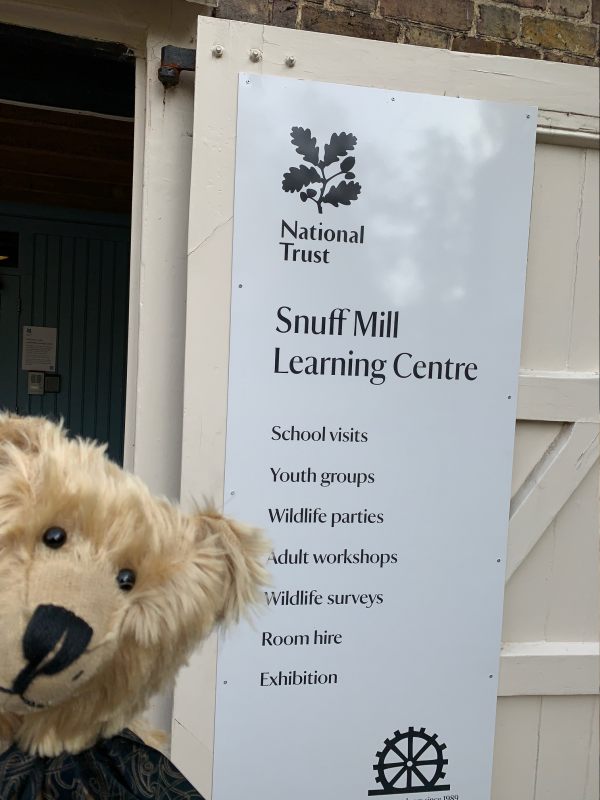
The Old Snuff Mill, now a learning centre.
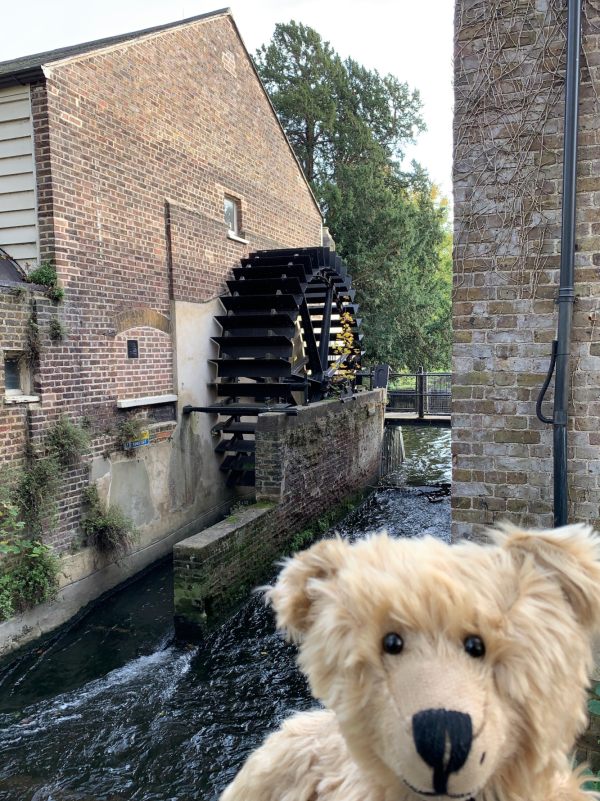
Cosmetically restored waterwheel for the old Snuff Mill.
Turn alongside the river to a beautiful white iron bridge and keep to the left signposted by Sustrans to join the boardwalk that eventually will take you to the edge of the park by the tramway.
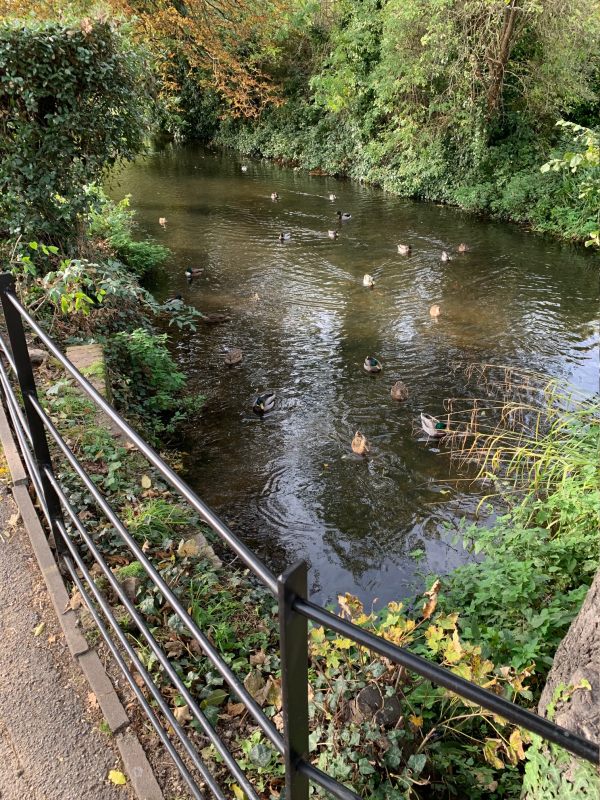
The River Wandle.
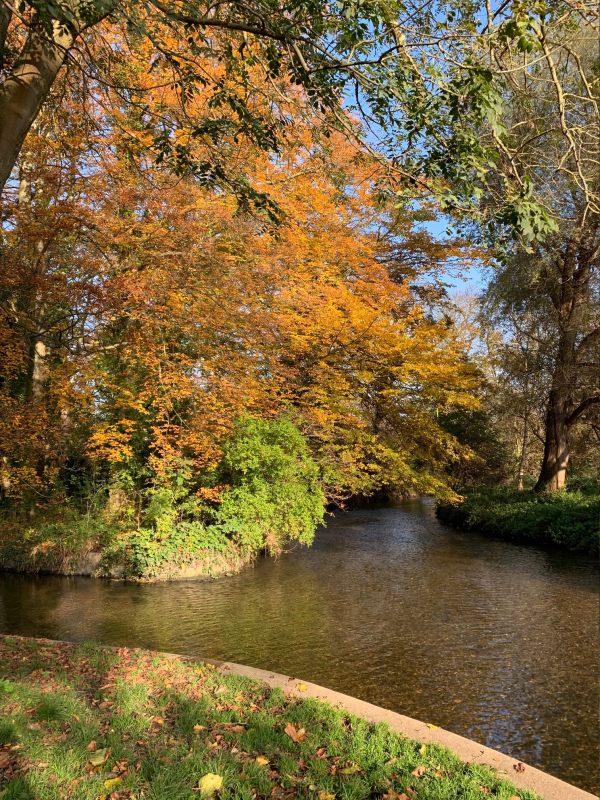
The Wandle, with many man made streams created for its working days.
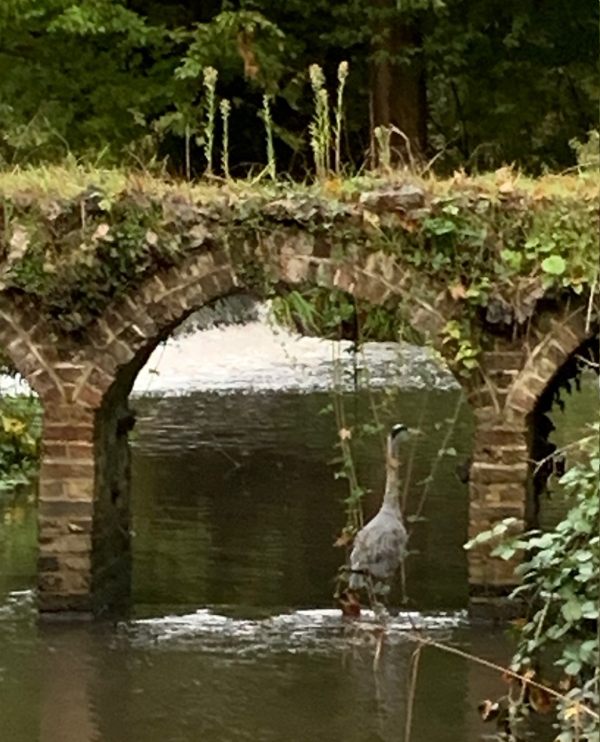
A heron in an old brick arch.
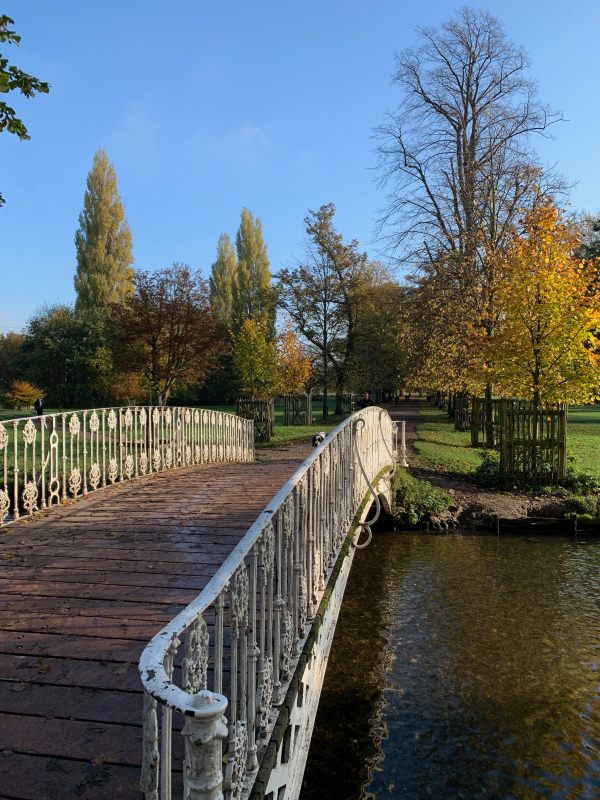
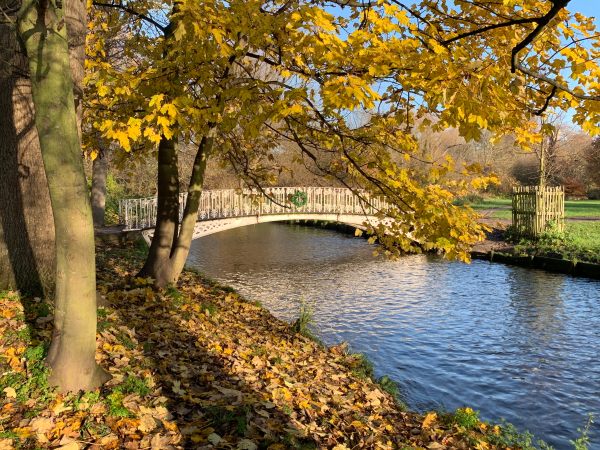
A beautiful iron bridge. One of many.
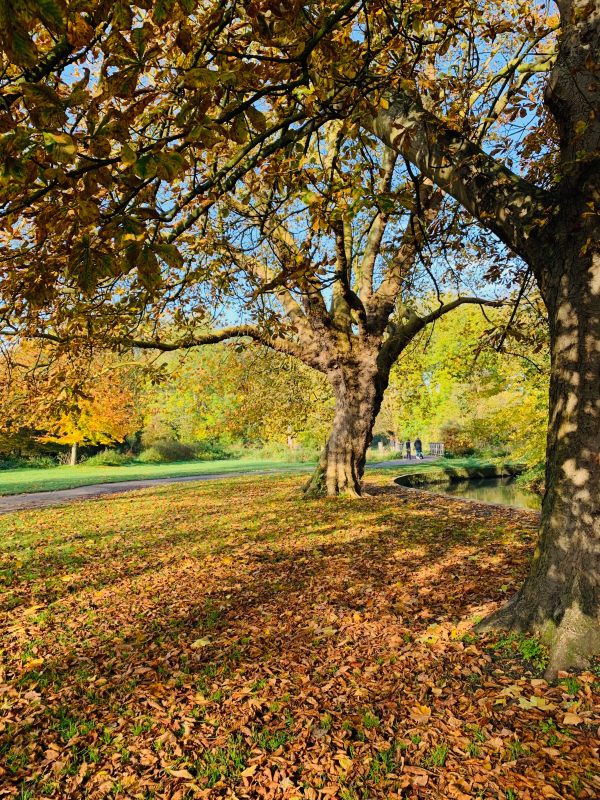
Autumn was lovely on the walk.
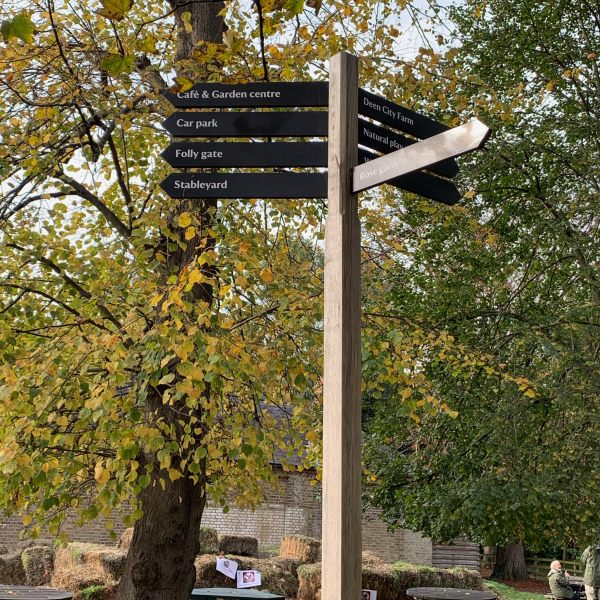
The park is well signed.
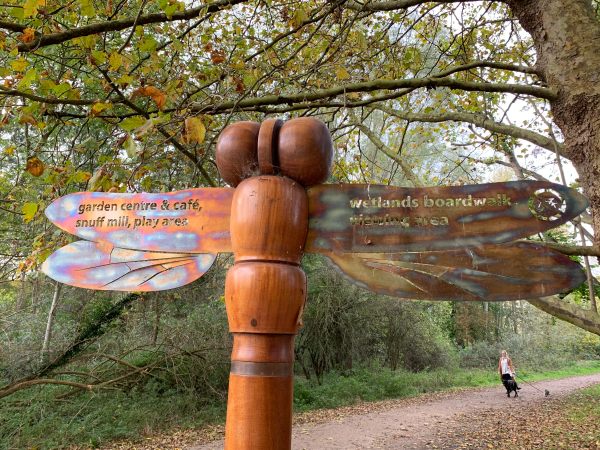
To the boardwalk.
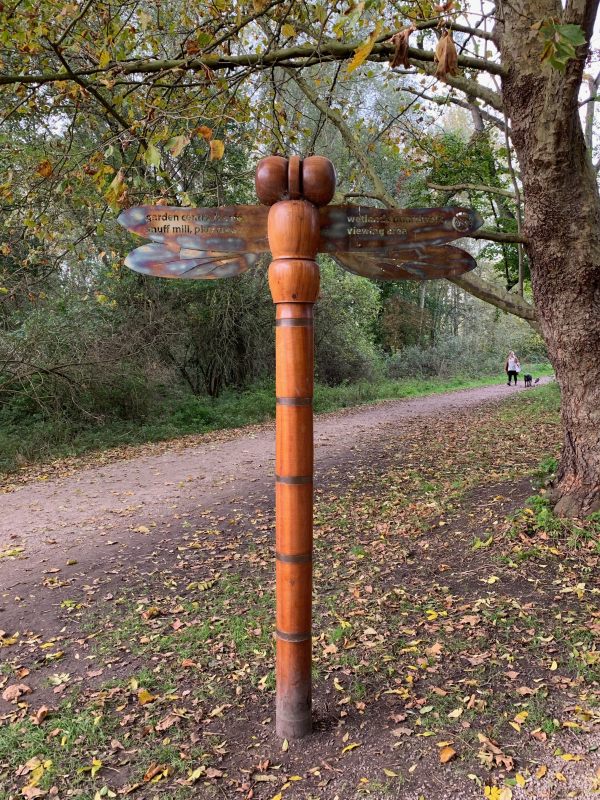
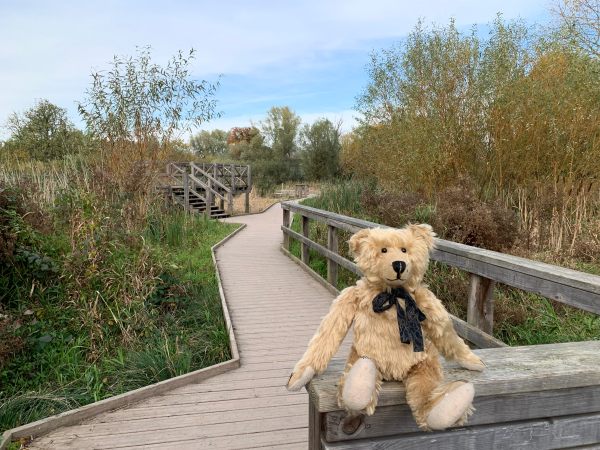
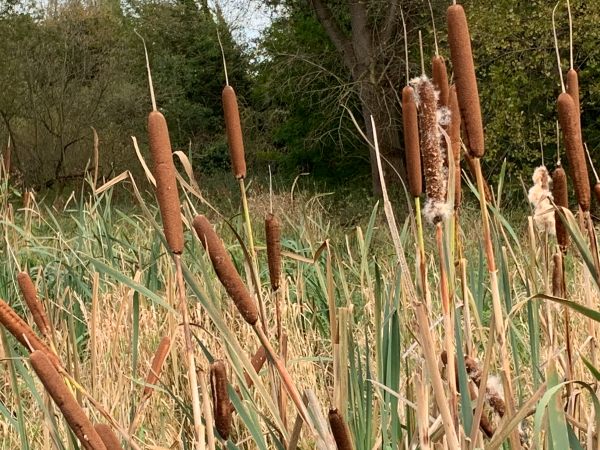
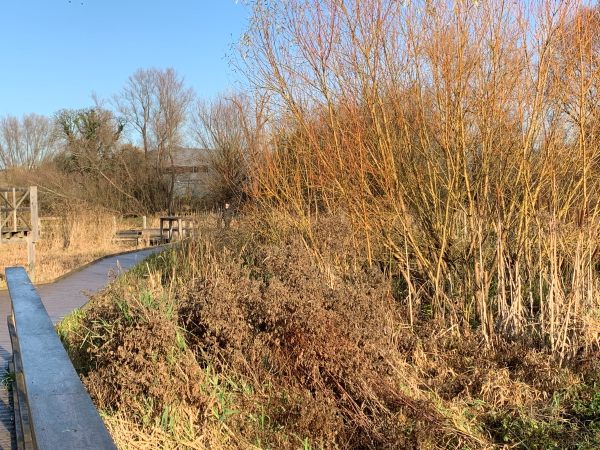
Walking down the boardwalk though reed beds. Cut in winter.
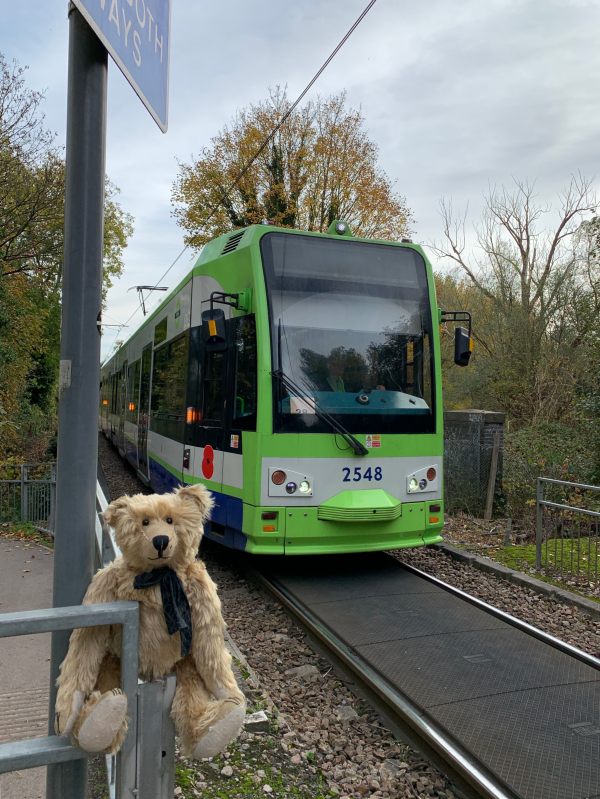
The tramway.
The tramway runs between Croydon and Wimbledon. Built partly on old railway lines. Historically part of the trackbed lies where once the Surrey Iron Railway ran. Horsedrawn before steam engines were invented it was one of the world’s earliest railways. We can recommend a good read of its route, which includes the whole area in which the walk is situated.
www.wandle.org/aboutus/mills/mcgowsir/mcgow12.htm
From here you have left the park and continued on the Wandle trail.
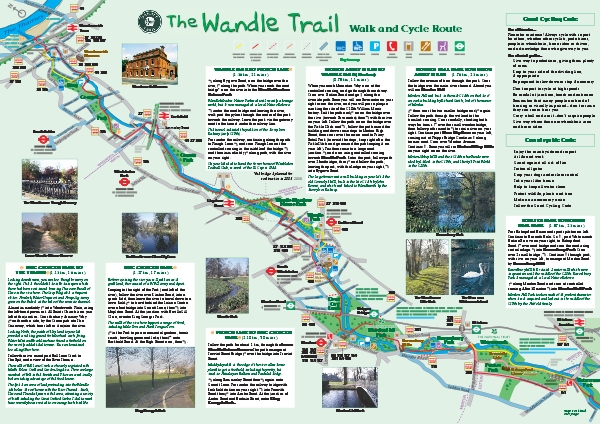
Map of the trail.
Click on this link for the PDF of the above map which you then view or print.
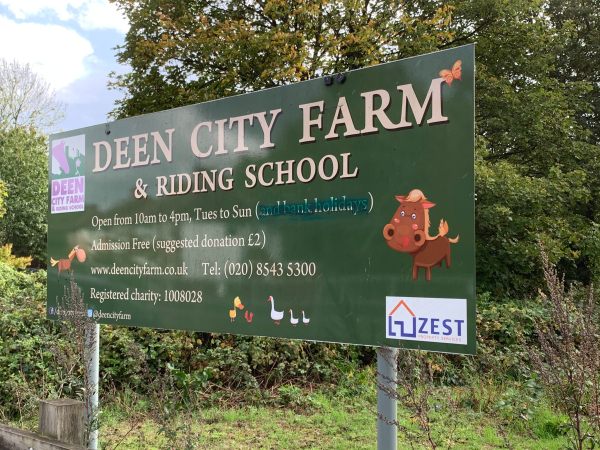
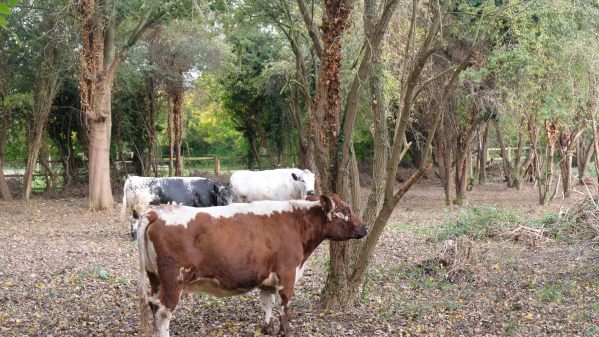
Passing Deen City Farm. Very popular with children. About 15 minutes from the Underground.

Why the National Grid? It reminds Bobby of the day he stood in exactly this spot and watched linesmen working high up on live cables. They had special suits that allowed the current through but kept them perfectly safe. Amazing job.
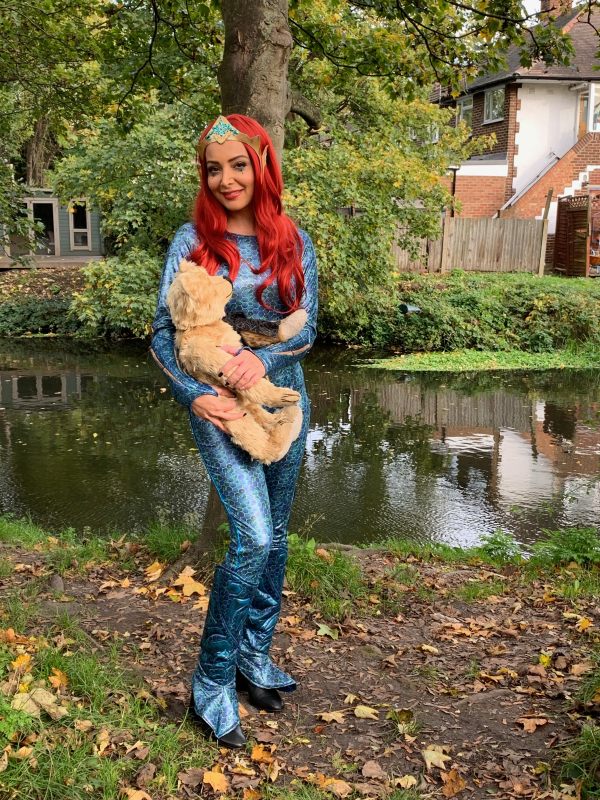
The Wandle was once a stinking cess pit of a river where tanneries in particular chucked all their waste in the river. It is so clean now that fish thrive. All sorts of birds are seen along here. And now the first mermaid!
(Publicity shoot where a bear makes all the difference between yes and bugger off).
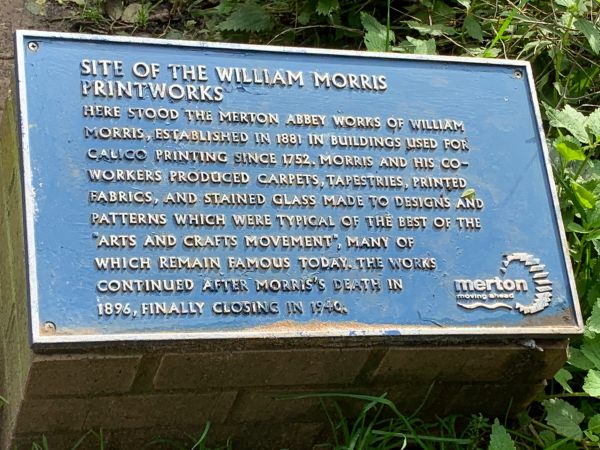
Further along you come to Merton Abbey Mills that are very popular
with shoppers. Once the site of the William Morris Printworks.
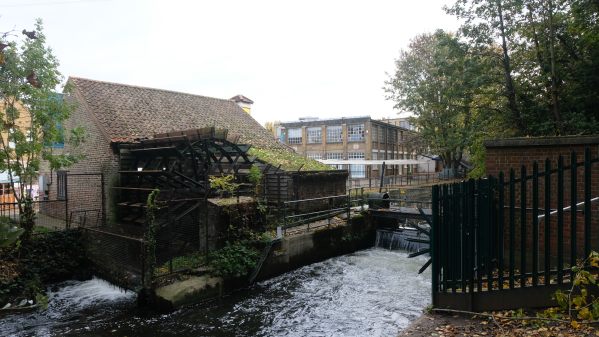
Merton Abbey Mills.
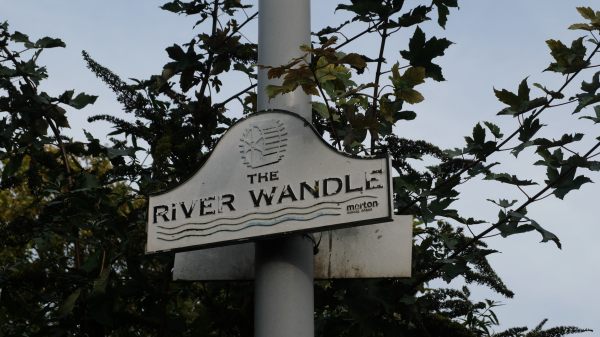
Note the watermill logo. The Wandle was once all watermills.
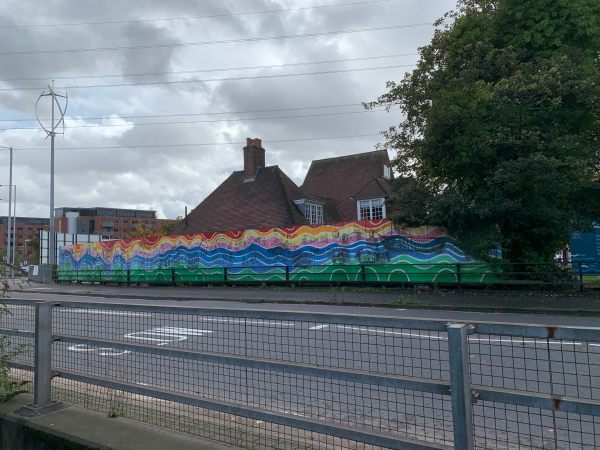
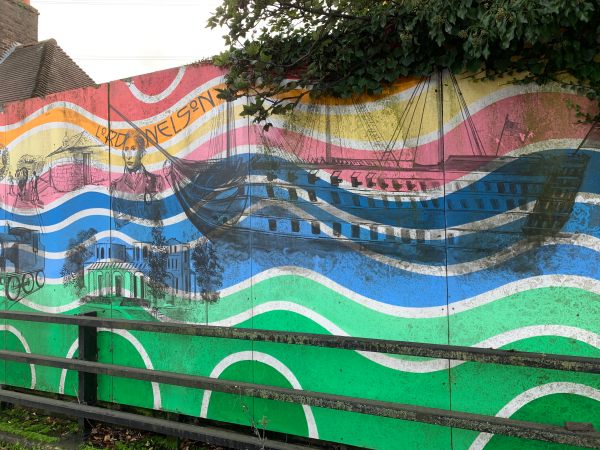
These hoardings may be a bit scruffy but they cover many of the places
of interest you have heard about so far plus the most famous local
inhabitant. Lord Nelson had his family home in the vicinity.
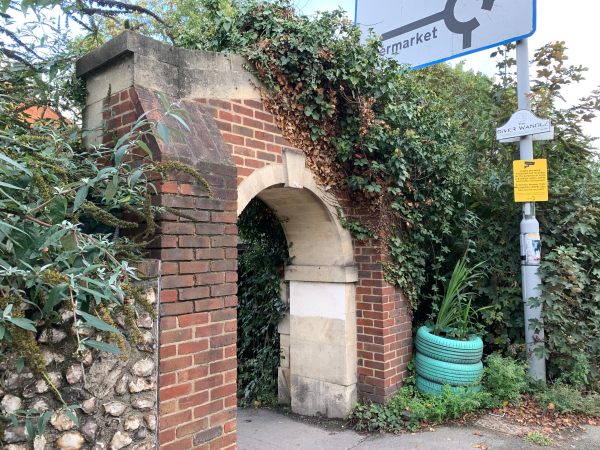
An ornate archway in the middle of nothing. With an exotic rubber tyre container of weeds. What a great country England is.
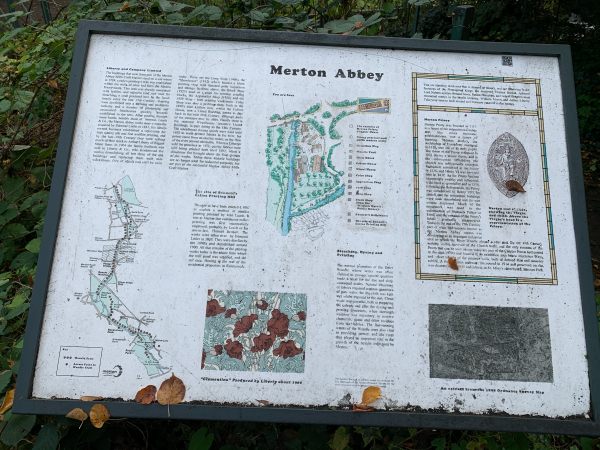
The story of Merton Abbey. Bobby should have taken a wet rag to clean it.
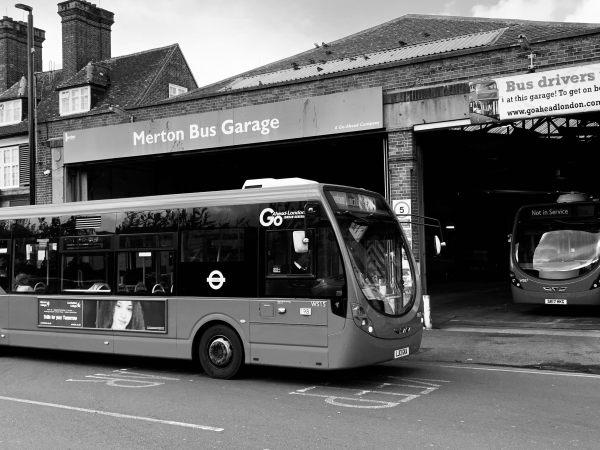
Merton bus garage. Once a den of iniquity. Where a bus mechanic
might well tighten up more than your wheelnuts.
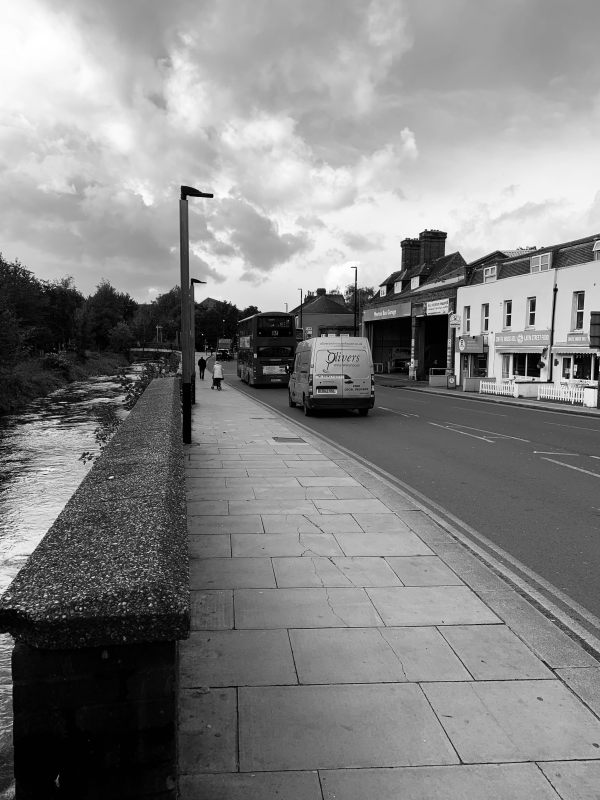
Looking along the A24 to Merton Bus Garage on the right.
A long time ago. It clouded over as we reached the A24 and the end of this section of the Wandle Trail. You can carry on by bike or foot all the way to the Thames at Wandsworth. Or Indeed east from the start in Morden Hall Park back towards Croydon. But we were heading along the main road on the last lap to St George’s in Tooting.
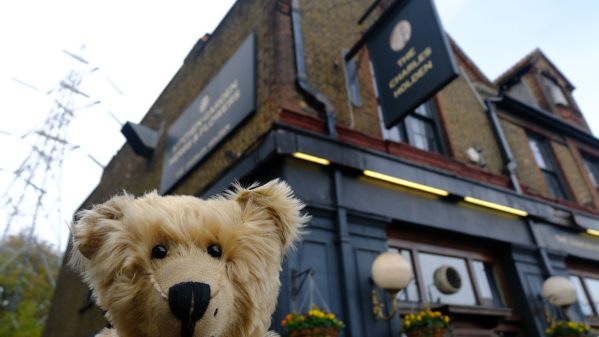
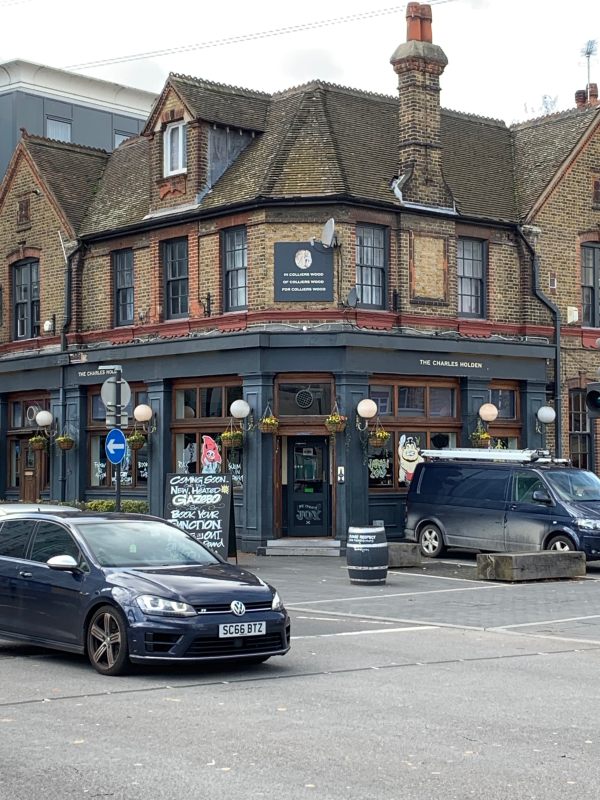
The Charles Holden pub at Colliers Wood.
Passing first the Charles Holden pub at Colliers Wood and the Underground station opposite. Make a note of the name, for he is the reason for the third part of the Trilogy coming up shortly.
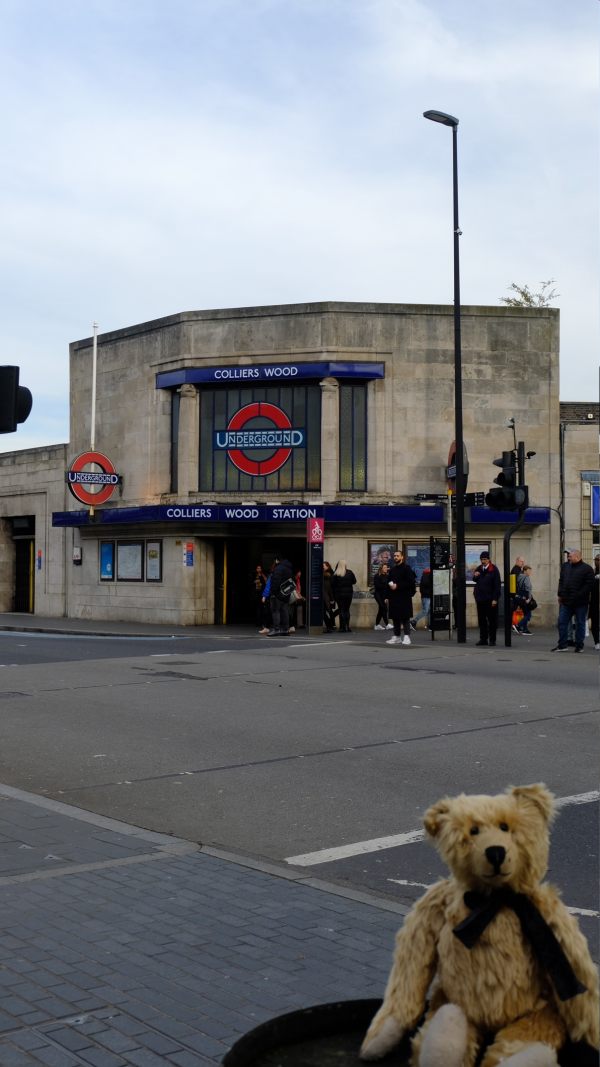
Colliers Wood Underground Station.
And finally to St Georges Hospital in Tooting. Scene of many ‘adventures’, some described in earlier blogs.
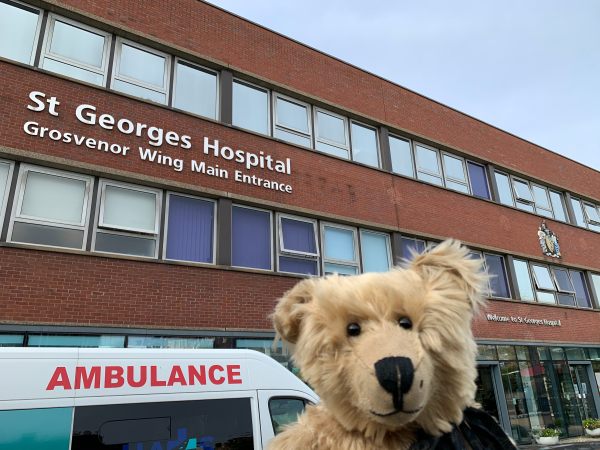
St George’s Hospital.
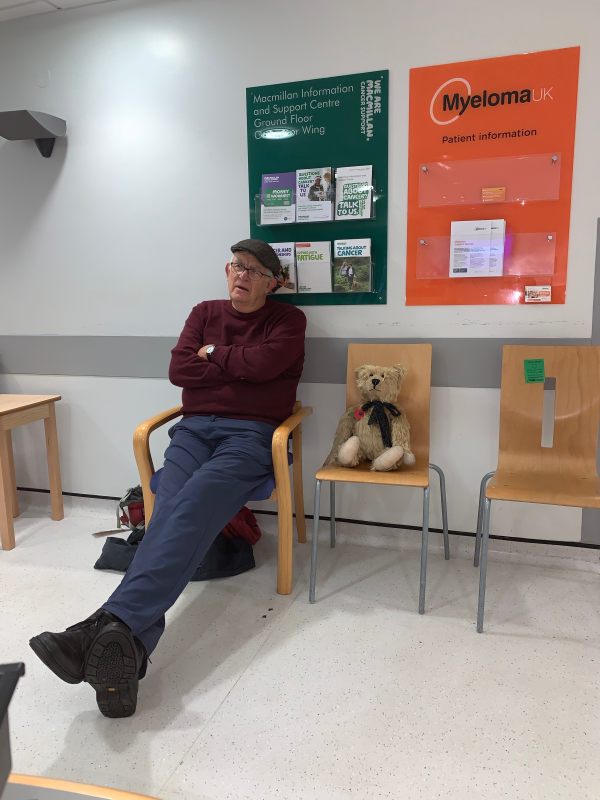
Waiting for Haemophilia Nurse Roisin from the Emerald Isle.
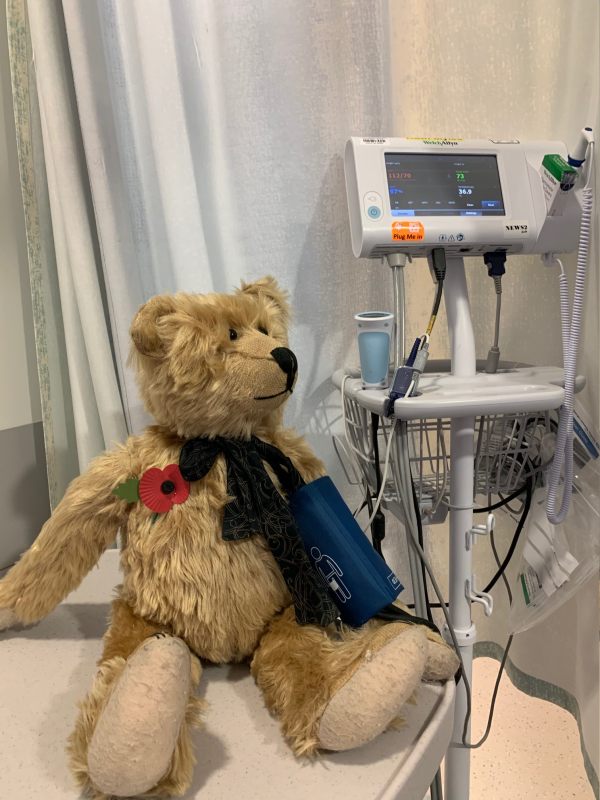
Getting my BP ( Bear pressure) checked.
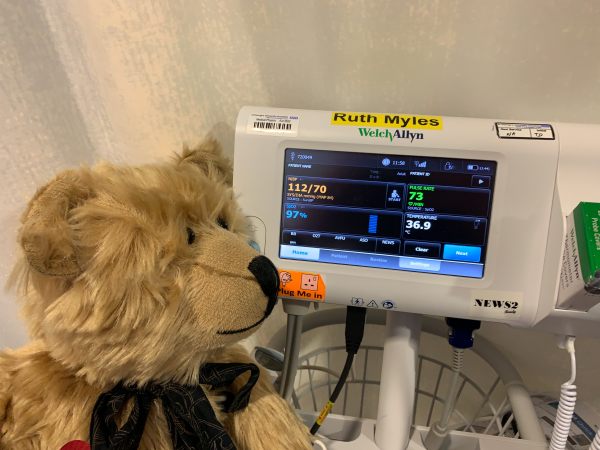
Better than Bobby’s!
In the four months now since the ‘Very Serious Event‘, Bobby has walked this walk in both directions probably twenty times. Going back is particularly nice in having the chance to have lunch in the NT café.
But, of course, it couldn’t last forever. The walk is lovely. Getting to and from the Park a real problem. By car or public transport, it’s an hour without the walk. Roughly two hours in total. Each way, although one day starts in Islington in the morning and that has led to two more very different stories to follow in this trilogy.
For now, the extreme medication is being relaxed and Bobby will not have to go regularly two days a week any more. But there will be other occasions to come to for what is his home hospital because of the Ruth Myles Unit. And he only took me once. On a nice sunny day.
Lighting a Candle
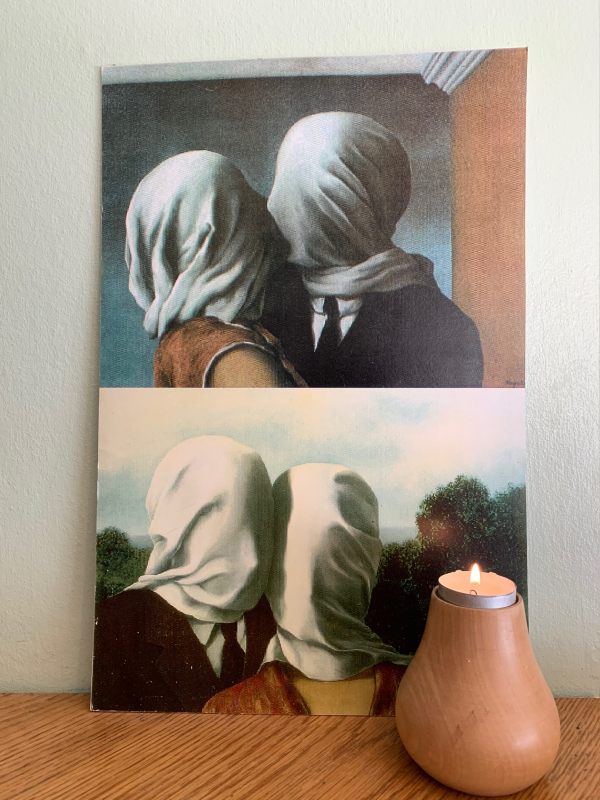
Diddley loved the artist René Magritte. This card reminds me of an exhibition of the artist we attended in Edinburgh. Somewhat unusual for an anniversary card. But that was Diddley.

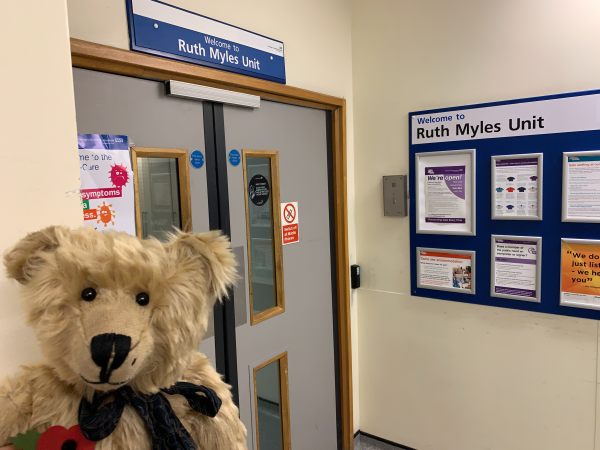
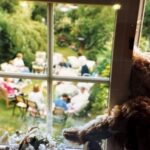
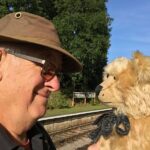


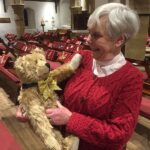

Leave a Reply